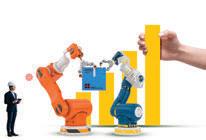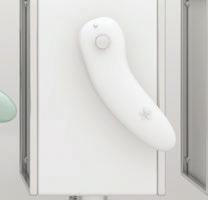
3 minute read
Vision and Control on One CPU
INDUSTRY DIRECTIONS
Vision and Control on One CPU
By David Greenfield dgreenfield@automationworld.com
Editor-In-Chief/ Director of Content, Director of Content, Automation World
Combining what have long been separate automation functions into a single control environment has been an ongoing industrial automation trend for years now. Two of the most prominent examples have been the combination of safety and control applications in one controller and the development of platforms that connect a range of devices and software in one Internet of Things (IoT) environment for monitoring and control.
To get insights into this trend, specifically around the combination of vision and control technologies, we connected with Daymon Thompson, automation product manager for Beckhoff Automation, for a recent episode of the “Automation World Gets Your Questions Answered” podcast series (awgo.to/XQpAA).
Explaining this trend of combining automation technologies, Thompson said it typically occurs in one of two ways. “One is where the functions are housed in separate pieces of hardware connected via a backplane. In this case, they each have separate CPUs and essentially remain separate pieces; they just look good together in the cabinet,” he said. “The other approach is to recognize that every one of those CPUs has software running on it to manage its function. Here, the developer takes those pieces of software, integrates them onto one bigger CPU, and then combines them into one programming environment. That’s the bigger trend we see with several industrial control suppliers. And it’s really the way I think every automation controller will end up going because the added performance of this approach can be measured in the controller’s total cycle time and update rate. And that has obvious beneficial effects on overall machine production levels and total machine output.”
Integrated architectures
A key aspect to look for in these integrated technology environments is how they are structured, advised Thompson. One method of doing this is to combine the technologies, but to close them off so that only the supplier’s technology works with it. “And, if one day you need more than that, you’ll likely have to add another PC and expand it with data logging or database connections, for example,” he explained.
The other method is what Thompson called the “open path,” wherein the customer can add to the system. “If the customer wants to do things like implement their own C# front end, or advanced data logging, or third-party software, the open path allows for those kinds of things,” he said. “And the open path makes it so much easier to combine new features. For example, with IoT you can take an existing controller and, rather than have to add a piece of hardware to the cabinet, you can just add another software module to the existing CPU using a REST API or MQTT. You can also add functionality for things like new advanced motion capabilities or linear transport system collision avoidance.”
Application
Considering Beckhoff’s history of combining automation functions in one controller, we asked Thompson to provide an example of a company who had done this and the benefits they derived from it.
He referenced a customer who wanted to retrofit an older machine so that it could duplicate the functionality of other, newer machines in the facility. This company had planned to replace the vision system on the older machine to match what was used on the newer machines. Instead, Beckhoff showed the company how it could implement the TwinCAT Vision software, so that machine control and vision were combined in one system.
Thompson said this company saw a 50% savings in costs versus replacing the older vision system as they had originally intended. “All they had to do was plug in a GigE camera they already had into their existing Beckhoff controller,” he said. “They didn’t even have to update the CPU.”
He added that this company also saw a 15% increase in production with this change, as they were able to process products and react faster using the new vision algorithm versus the previous system.





